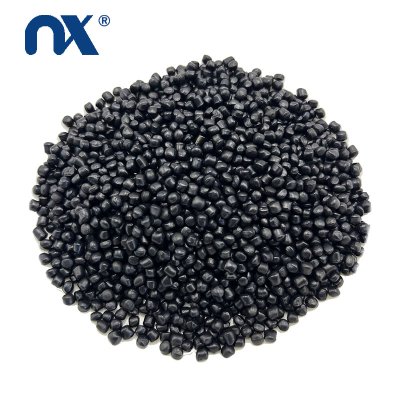We never imagined that a desiccant masterbatch could impact the entire packaging ecosystem.
At Nuoxin, our work in the plastics industry led us to an unexpected discovery. Moisture in raw materials has long plagued plastic manufacturers, reducing product yield and increasing costs. Initially, we concentrated on the moisture absorption capability of desiccant masterbatch during the molding process. However, our journey revealed much more. These tiny particles are quietly transforming not only how products are made—but also how they're perceived, how sustainable they are, and how they perform in the real world.

Working closely with our customers opened our eyes: Every masterbatch carries a hidden responsibility to improve recyclability, reduce environmental impact, and enhance end-user experience in ways that go far beyond the production line.
What Is a Desiccant Masterbatch?
Calcium oxide-based hygroscopic materials
Desiccant masterbatch is a functional additive composed mainly of calcium oxide (CaO), designed to absorb moisture during plastic processing. It is compatible with polyethylene (PE), polypropylene (PP), and other polymers and is commonly used in blown film, cast film, and injection molding.
Prevents silver streaks, bubbles, and cracks caused by moisture.
Improves finish and appearance—bags become more transparent and smooth.
Stabilizes processing—reduces slippage and instability during production.
Improves recycled plastic processability.
We ensure optimal reaction efficiency, carrier compatibility, and uniform dispersion—because these qualities directly impact your final product.
Hydrated Plastics: A Long-Underestimated Challenge
Moisture is the plastics industry's invisible enemy
Recycled plastics—and even virgin resins—often retain moisture. In humid environments or during monsoon seasons, this issue is amplified. If left unaddressed, moisture causes:
Silver streaks and bubbles: Defects on product surface that impact aesthetics.
Cracks and embrittlement: Caused by vapor expansion during processing.
Yellowing and degradation: Free radicals discolor and weaken the plastic.
Mold corrosion: Moisture leads to acidic condensation and equipment damage.
These micro-defects affect not just product quality—but brand credibility and consumer satisfaction.
Why Calcium Oxide?
Simple Chemistry, Big Results
At processing temperatures, calcium oxide reacts with water to form calcium hydroxide and release heat:
CaO + H₂O → Ca(OH)₂ + Heat
This reaction is fast and irreversible—perfect for absorbing moisture in plastics. Compared to drying ovens or hot-air systems, desiccant masterbatch offers:
No additional drying equipment needed
Lower energy consumption
Simple dosing and easy mixing
Better performance with high-recycled-content materials
Our formulations contain 10%–80% CaO to meet various humidity conditions. Whether you process high-moisture recycled flakes or sensitive film-grade resins, we have a solution.
More than a problem solver—it’s a green enabler
Recycled plastics are essential for sustainability—but they're notoriously hard to dry. This problem can be overcome by:
Improving the moldability of recycled resins
Extending product lifespan
Reducing waste and scrap
Complying with RoHS, FDA, and global environmental regulations
It's not just a tool for efficiency—it’s a catalyst for sustainable manufacturing.
Product Safety and Quality Control
Every batch is subject to rigorous quality checks. Since many of our masterbatches are used in food packaging and agriculture films, safety is non-negotiable. Our commitment includes:
High-purity calcium oxide (>98%)
PE or PP carrier options
Particle size control for improved dispersion
Moisture absorption rate >60%
MSDS, TDS, and SGS certifications available
We never use opaque fillers or recycled CaO. Product quality builds trust—batch after batch.
Usage Tips: How to Maximize Moisture Absorption
Add at 1–5% of total material weight, adjusted for humidity
Mix thoroughly before feeding
Avoid prolonged exposure to air before use
Store in sealed, dry, and cool conditions
More effective when used with recycled plastics
Need a custom formulation? We tailor solutions for blown film, injection molding, and more.
Customer Success Stories
Blown film factory, South Asia: By adding 3% desiccant masterbatch during monsoon season, scrap rate dropped from 12% to 4%.
Injection molding plant, Canada: Eliminated 9 hours of oven drying for high-moisture recycled PP, cutting energy consumption by 60%.

Conclusion: Small Particles, Big Responsibility
Desiccant masterbatch is no longer just a drying additive. It’s:
A promoter of green production
A stabilizer of recycled materials
A guardian of product quality
A catalyst for efficient manufacturing
At Nuoxin, we embrace this responsibility. Our desiccant masterbatches reflect the plastics industry's commitment to cleaner production, better materials, and smarter resource use.
Contact us to learn more, request a sample, or explore custom solutions tailored to your production challenges.



